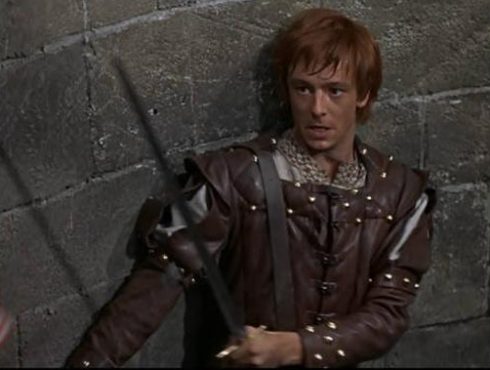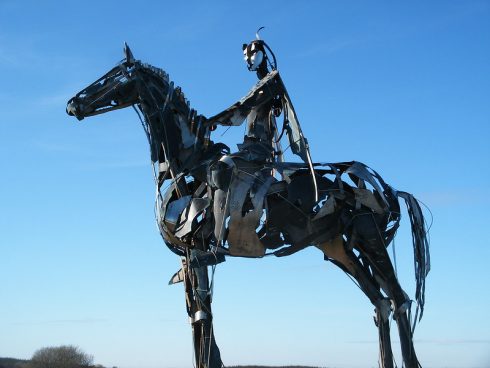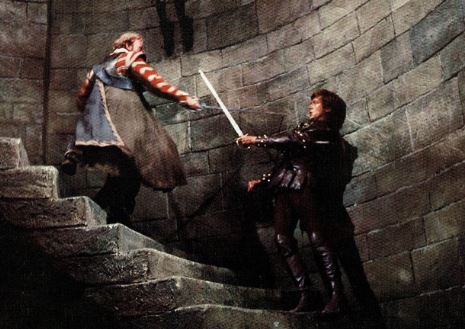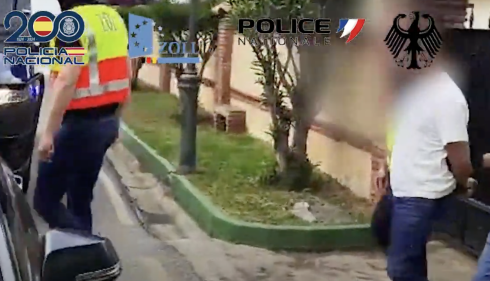IF Braveheart taught us anything, it’s that a rebel with a vendetta against the English monarchy must be fearless, persistent and pretty nifty with a sword.
In the mountains of 16th-century Ireland there existed such a man; a warrior with determination, valour and Spanish soldiers on his side, who lost his life in the pursuit of freedom.

The story of ‘Red Hugh’ has huge importance for Spain and the northern city of Valladolid, where he was believed to be buried in the chapel grounds of a Franciscan convent. But when the monastery was leveled in 1836, the convent and the bones of Red Hugh were not there. Now, archeologists are searching for the skeleton of the eight-toed Irish rebel beneath a branch of Banco Santander in the city centre.
The red-headed rebel was born into the powerful O’Donnell dynasty in County Donegal and fought valiantly for control of his nation against Queen Elizabeth I. But, rather than a Mel Gibson historical fiction epic, the chieftain’s bravery in the Nine Years War would be immortalised by the 1960s Disney film – The Fighting Prince of Donegal.
Based on the novel Red Hugh: Prince of Donegal by Robert T Reilly, the film depicts the Irish leader’s ascension to the throne after the death of his father. Like all good heroes, the fictional Hugh successfully multi-tasks his preparation for battle while simultaneously courting his love interest, Kathleen McSweeney.
Some critics thought the tale was predictable and simplistic, others embraced it as unostentatious fun. Whatever the reception, one fact remains indisputable: the reality was more grisly than Disney audiences could have stomached.

At just 15 years old, Red Hugh was kidnapped by the English army and imprisoned in Dublin Castle. His abduction served as a warning to the O’Donnell clan: if you rebel against the English monarchy you will face the consequences.
But after five years of captivity, he escaped with help from a loyal friend of his father. The journey home during a bleak Irish winter nearly cost the renegade his life. Red Hugh recovered from severe fatigue, but lost his two big toes to frostbite.
The chieftain was quick to begin invasions to reclaim Irish land that had been commandeered by the English in his absence. As a fellow Catholic territory fighting to rid itself of protestants, Spain’s King Phillip III supported the effort and sent boats of warriors to Kinsale.
When Spanish ships docked at County Cork, English troops surrounded the armada and killed hundreds of men in a bloody battle.
A persuasive negotiator, Red Hugh ventured to Spain after the siege to plead with the king to continue his support and send further soldiers to Ireland. But the mission proved fatal. Before help could be granted, Red Hugh mysteriously died a few miles from the city. Some said an infection killed the 29-year-old warrior, others claimed he was poisoned by a British spy.
His body was taken to the royal palace in Valladolid with pomp and ceremony. A four-wheeled hearse drove the corpse to its resting place, surrounded by guards, state officers and flaming torches to signify admiration.
As a mark of respect, the king honoured Red Hugh with a special burial in the Chapel of Wonders – a Franciscan convent where explorer Christopher Columbus would be buried a century later.
Now, nearly two centuries after his remains were reported missing from the site, the dig for answers and the true location of his burial chapel continues beneath a street in Valladolid where 16 skeletons have been unearthed.
Relatives of the rebel have offered DNA samples to help identify which belong to the chieftain. Archeologists will also have to study the height, sex, and age of each skeleton for clues – unless one is discovered with two toes missing.
An escapologist even in his afterlife, Red Hugh has become an Irish symbol of Gaelic resistance. The discovery of his bones could finally confirm whether infection or English cunning brought the chieftain to his suspicious demise in Spain.










